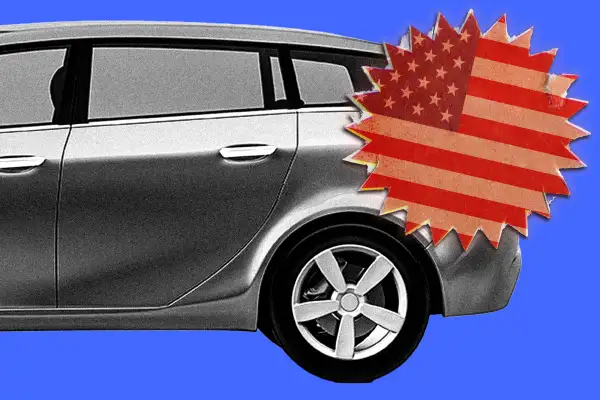Here's How to Tell if a Car Is Made in America

As tariffs begin to reshape the auto industry, there's suddenly a new question that's top of mind for car buyers: Was this vehicle made in America?
With some car prices set to rise by as much as $10,000 if tariffs remain in place, car shoppers want to know what's under the hood — or more specifically, where everything's from.
Tariffs likely won't cause car prices to spike immediately, given that new vehicle inventory is currently higher than normal for the auto market overall. Cars.com said in a recent report that at this point it's unclear "if automakers will absorb [the extra cost], pass it on to the consumer on a particular model, or pass it on to the consumer by distributing the price increase across its vehicle lineup."
With President Donald Trump suggesting that tariffs could be permanent in order to bring auto manufacturing jobs back to the U.S., the car industry is now bracing for significant impacts. People buying cars this spring who want to avoid the tariff charges will likely have the most luck shopping for American-made cars or foreign vehicles that were imported before the auto tariffs took effect, experts say.
Determining a vehicle's origin can be extremely complicated, and even American car brands that are trying to emphasize their patriotism in new commercials and marketing may be highly dependent on foreign manufacturing or parts.
"A car can be assembled in one country with parts from dozens of others, and with a badge on the car's hood from an automaker that could be an ocean away from where it goes on sale," says Patrick Masterson, lead researcher for Cars.com's American-Made Index.
It's much simpler, however, to look up where a vehicle was assembled — and that may be all you need to know to avoid the extra cost due to tariffs.
How to really tell if a car is American
If you want to dig deeper into how American a car really is, there are resources from academic and industry sources that can help.
Consider using Cars.com's aforementioned American-Made Index, which covers five categories (assembly location, percentage of U.S. and Canadian parts, engine origin, transmission origin and U.S. manufacturing employees) and ranks the top 100 vehicles out of 400 that were analyzed.
Another tool you can use is the similarly named "Made in America Auto Index" developed by Frank DuBois, associate professor at the American University Kogod School of Business. This index takes into account factors like where the automaker's headquarters are located and where the research and development of a vehicle was completed.
There are some notable absences in the NHTSA data. For example, the Toyota Camry isn't listed in the latest spreadsheet.
The Kogod School researchers filled in some of these gaps in the NHTSA data by visiting dealerships and looking at cars' window stickers. DuBois also recommends using VIN numbers to check where a vehicle is assembled, as this method is even more reliable than the window stickers, according to his research.
The first digit of the VIN will tell you where the car was assembled. U.S. numbers start with 1, 4 or 5. Other common country codes are Mexico (3), Canada (2), Japan (J) and Korea (K).

